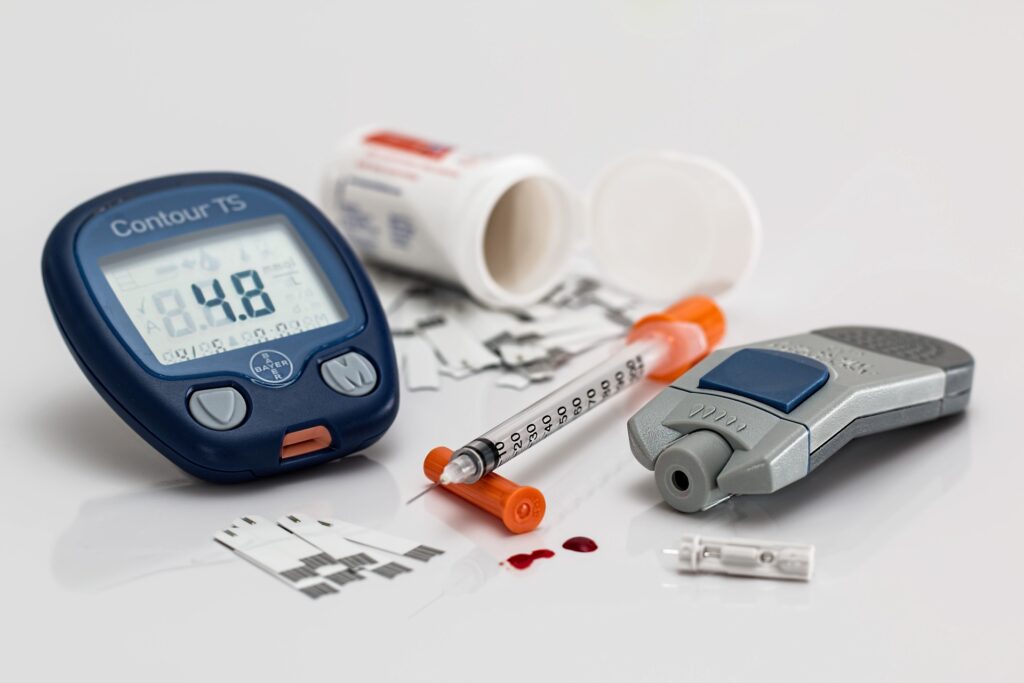- +1 907 375 5200
- Mon - Fri: 8:30a - 4:30p

There are two forms of diabetes. The most common form of Diabetes is known as Type II Diabetes. Type II Diabetes is a result of two core factors. These factors can be separate or found together in patients suffering from this disease. These two factors include either/or wearing out of the pancreas or a decreased response of your cells to insulin (your cells “ignore insulin”). One of the large functions of the pancreas is to release Insulin. Insulin is simply a “key” that unlocks the door to all your cells and allows blood sugar to enter. Blood sugar is to the cells of your body as gasoline is to your car or truck. Thus in either case or in both cases, if the pancreas does not release enough insulin or your cells “ignore” insulin, you get a rise in your blood sugar.
On the other hand, Type I Diabetes refers to a non functioning pancreas. Most patients are born with type I diabetes and have onset as a child. This can also occur later in life secondary to certain autoimmune processes which can attack the pancreas. This is in contrast to Type II Diabetics who have progressive loss of function of their pancreas. Or in other words, Type II Diabetics have a “tired” pancreas that wears out over time. Type II Diabetics in most cases have enough function of their pancreas to release insulin, just not enough to control their blood sugars optimally. Type I Diabetics have to take insulin and there are no oral agents that can treat Type I Diabetes. Type II Diabetics on the other hand often take oral agents when they are first diagnosed and as their pancreas continues to wear out can eventually end up taking insulin.
All diabetic patients should have a test called a Hemoglobin A1c drawn every three months to follow the progress and control of their diabetes. This test simply looks for how much blood sugar is “stuck” to your red blood cells and gives you an average of your blood sugars over the past 3 months. This test can also be used to screen for diabetes and in conjunction with a 2 hour glucose tolerance test can be used to diagnose diabetes. For diabetic patients, it is recommended that their Hemoglobin A1c test be 6.5 or less. This will help decrease the risk of complications commonly associate with diabetes.
It is very important that diabetic patients maintain good control of their blood sugars. Having diabetes significantly increases the risk of kidney disease, heart disease, nerve damage, eye damage (leading to blindness), and serious infections which can lead to amputation. Having optimal control of your diabetes can significantly reduce the occurrence of these complications/outcomes along with optimal control of blood pressure and cholesterol.
As a diabetic patient, it is also important that you have your blood pressure checked on a regular basis along with your cholesterol (at least yearly). Many diabetic patients have high blood pressure and high “bad” cholesterol as co-morbid conditions. High blood pressure in itself, and especially in conjunction with diabetes, increases the risk for kidney disease, heart disease, and eye damage. Furthermore, high levels of “bad” cholesterol (LDL cholesterol) also contributes to the risk of heart disease in diabetic patients.
Diet and exercise are core to helping improve diabetes and prevent Type II Diabetes. Prevention of diabetes through diet and exercise is exclusive to Type II Diabetes but is just as important for patients diagnosed with Type I Diabetes. Exercise helps your cells to more efficiently use blood sugar, and for cells that may want to “ignore” insulin, can make them more “receptive” to insulin. It also deters fat cells from “sucking up” and storing blood sugar and growing larger.
In conjunction with exercise, a good diet limits the amount of “sugar” you are putting into your blood stream. When we talk about sugar, we are mainly referring to glucose. Glucose comes from starches (breads, pasta, cakes, potatoes, etc…). People commonly know that these are the foods containing “carbs” (carbohydrates). Simple sugars which make things sweet also contribute to this. The average American eats 150lbs of sugar a year. This is far too much for our body to process. This is why so many Americans are being diagnosed with diabetes. We are literally wearing our pancreases out. Eating a well balanced meal is core to staying healthy, maintain good blood sugar control, and also for preventing Type II Diabetes along with exercise. We recommend that patients follow the South Beach Diet which in simplicity of idea is tailored to higher protein foods. The main idea of any diet is balance. Too much protein, just like too many carbohydrates, is not good.